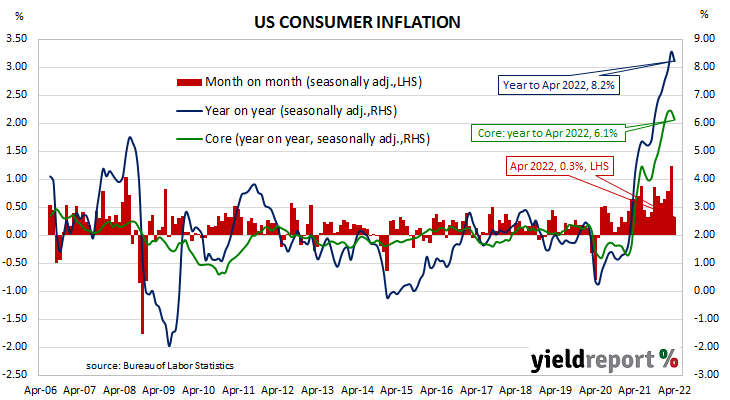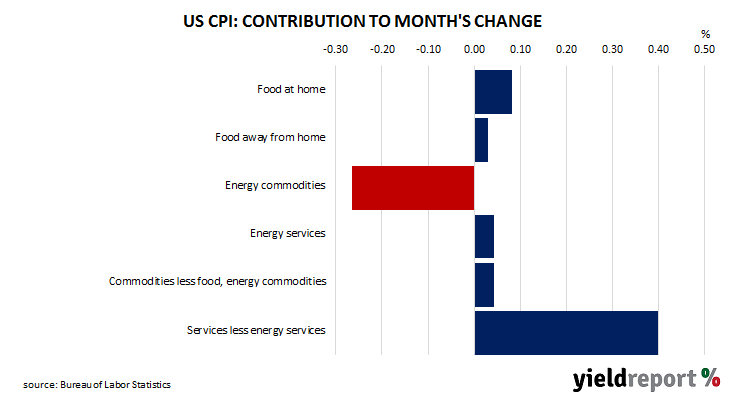Summary: US CPI up 03% in April, slightly higher than expectations; “core” rate up 0.6%; some measures excluding volatile components beyond food and energy show declines; Treasury yields down but rate rise expectations firm; Fed won’t relax until monthly core inflation measures are closer to 0.2%; non-energy services main driver of headline rise.
The annual rate of US inflation as measured by changes in the consumer price index (CPI) halved from nearly 3% in the period from July 2018 to February 2019. It then fluctuated in a range from 1.5% to 2.0% through 2019 before rising above 2.0% in the final months of that year. Substantially lower rates were reported from March 2020 to May 2020 and they remained below 2% until March 2021. Rates has risen significantly since then.
The latest CPI figures released by the Bureau of Labor Statistics indicated seasonally-adjusted consumer prices rose by 0.3% on average in April. The increase was slightly higher than the generally expected figure of 0.2% but significantly less than March’s 1.2%. On a 12-month basis, the inflation rate slowed from March’s reading of 8.6% to 8.2%.
“Headline” inflation is known to be volatile and so references are often made to “core” inflation for analytical purposes. Core inflation, a measure of inflation which strips out the more variable food and energy components of the index, increased by 0.6% on a seasonally-adjusted basis for the month. The rise was greater than the 0.4% expected, as well as March’s 0.3% increase. However, the annual growth rate still slowed from 6.4% to 6.1%.
“At face value the core CPI measures weren’t overly comforting to policy makers. However, some measures based on stripping out volatile components beyond food and energy showed declines…,” said NAB senior interest rate strategist Ken Crompton.
Longer-term US Treasury bond yields fell on the day. By the close of business, the 10-year Treasury yield had lost 6bps to 2.93% and the 30-year yield had shed 8bps to 3.05%. The 2-year yield finished 1bp higher at 2.62%.
In terms of US Fed policy, expectations of higher federal funds rates over the next 12 months firmed slightly. At the close of business, June contracts implied an effective federal funds rate of 1.015%, 18bps higher than the current spot rate. July contracts implied 1.435% while May 2023 futures contracts implied an effective federal funds rate of 3.075%, 224bps above the spot rate.
“While it’s likely that the headline inflation number has peaked in the US, the Fed won’t relax until monthly core inflation measures are closer to 0.2%, versus the 0.6% print in April. Service inflation excluding food and energy accelerated in April, suggesting that labour market tightness is still putting upward pressure on prices,” said ANZ senior economist Adelaide Timbrell.
The largest influence on headline results is often the change in fuel prices. “Energy commodities”, the segment which contains vehicle fuels, decreased by 5.4%, subtracting 0.27 percentage points. However, prices of non-energy services, the segment which includes actual and implied rents, had the largest single effect, adding 0.40 percentage points after they increased by 0.7% on average.



